After driving your car for years, corrosion will inevitably form in its terminals. In this article, I’ll explain the causes of the corrosion on positive and negative battery terminals, and how to fix it.
Generally, if the corrosion has already formed in the negative terminal, it is a sign of battery undercharging. However, if the corrosion has formed on the positive terminal, it is due to the overcharging of the battery.
A simple fix to battery terminal corrosion is to cover them with a coat of baking soda. Do this also on other parts of the battery that are corroded. Then get a small amount of water and pour it on each terminal and the corroded parts.
You will notice that bubbles start to form where the solution has made contact. This reaction neutralizes the acidic corrosion enabling you to touch the terminal safely.
Read on to learn more about corrosion on a car battery’s positive and negative terminals, causes, and usual fixes.
Corrosion on Battery Terminal
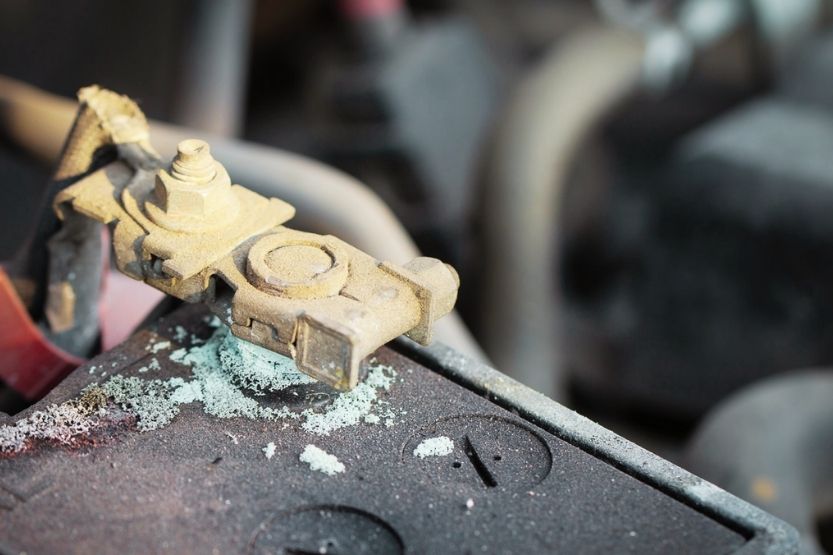
Undercharged or Overcharged Battery
What does corrosion on a car battery mean? When you see corrosion on the negative terminal, it is a sign that you have undercharged your battery. But if there is corrosion on the positive battery terminal, you have overcharged your battery.
Use Baking Soda and Water
Fixing this battery condition is relatively simple. Get enough baking soda and cover the positive and the negative terminals. Since you are at it already, do the same thing to other parts of the battery that are also corroded.
Then pour a small amount of water into these corroded terminals and battery parts. You will notice bubbles forming on top of them. This only means that the acidic corrosion is neutralized, making it safe to touch.
Whitish or Greenish-blue Color
Corrosion on the positive terminal of a battery can have a whitish or greenish-blue color depending on the metallic composition of the terminal. The usual reason why they appear is battery overcharging.
Negative Battery Terminal Corrosion Is Common in Lead Acid Batteries
The negative battery terminal corrosion appears when you have undercharged your battery.
Undercharging of the battery can also happen if you are not frequently driving your vehicle, so the battery is not getting its adequate charge. Battery terminal corrosion often occurs in Lead-Acid batteries.
Battery Terminal Corrosion – Causes
What causes corrosion on battery terminals? The typical corrosion in car batteries happens because of leaking electrolyte or hydrogen gas from inside the battery. Another cause is the alternator overcharging the battery for extended periods.
Corrosion can also be triggered by the chemical reactions of the electrolyte with the battery’s copper clamps. To understand these causes better, here are their respective details:
1. Electrolyte Leakage
This battery issue is common to lead-acid batteries. Over time and due to stress and damage, the electrolyte inside the battery can leak. The leaking electrolyte then accumulates on the terminals of the battery.
The problem worsens further if the car owner has the habit of pouring more water than the battery requires.
2. Overcharging
An alternator that overcharges the battery will eventually cause corrosion on the terminals. It is essential for you always to check the voltage used by your car to ensure that the alternator is not charging more than 14.5 volts while you are revving the engine.
Use a multimeter to check the voltage.
3. Leaking Hydrogen Gas
During electricity production, a malfunctioning battery will at times leak hydrogen gas into the atmosphere. When this gas comes in contact with the metal parts of the battery, such as the terminals, it will produce a chemical reaction which in turn causes corrosion to the terminals.
There are two possibilities when hydrogen gas is leaking from a battery. If the corrosion occurs in the positive terminal, the battery is overcharging. But if it’s the negative terminal that corrodes, the battery is undercharging.
4. Battery Overfilling
One of the causes of electrolyte leaks is overfilling the battery with water. You should only pour the required amount of water into the battery. Check if your battery is the type that needs water refilling. If so, be careful not to pour more than the amount of water it requires.
5. Chemical Reaction on the Copper Clamps
Copper does not corrode easily in its natural state because it is a conductor. However, if you pass an electric current through copper, it will produce copper sulfate. So, a battery with copper terminals that carries electricity will eventually lead to the corrosion of these terminals.
If you notice a residue with bluish color on the terminals, that is a sign of copper sulfate formation. This substance does not conduct electricity that well. If this is not fixed, your battery will become weak, and your car will eventually experience electrical supply problems.
6. Battery Age
Car batteries can last up to five years if properly cared for and not abused. If your car is nearing this age, and you haven’t given it its proper care, it may show signs of old age.
Corrosion will likely form in its terminals, and it will not function as it did before. However, if all things are going well, five years is the best scenario. Other factors may compromise its performance.
How to Clean Corrosion on Battery Terminals
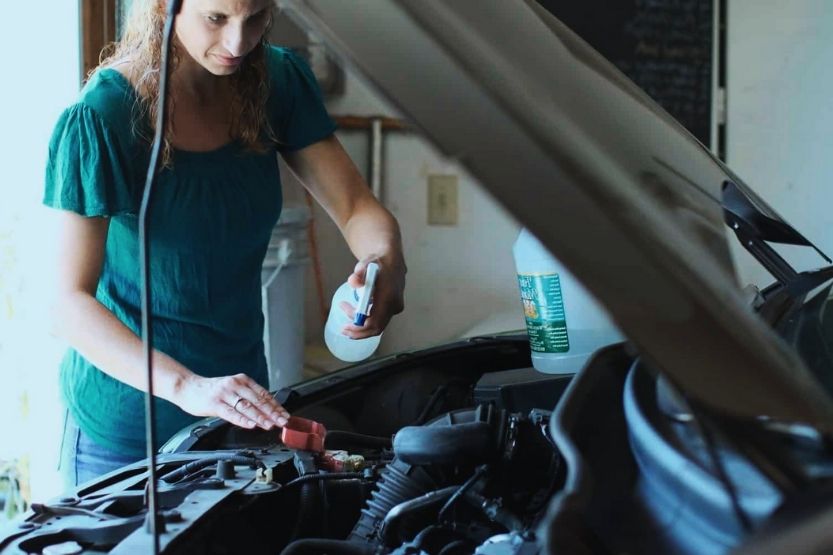
Corrosion on vehicle battery terminals is one of the most straightforward problems. When you know the cause of the corrosion, it is relatively easy to choose the best fix. That said, there are different methods of fixing corrosion on battery terminals.
Removing the corrosion and cleaning the battery terminals is the first step in fixing this corrosion problem. But before attempting to clean the terminals, you should first remove the terminals from the battery.
Household Items You Can Use to Clean Corrosion on Battery Terminals
The negative terminal should go first before the positive terminal. Now you are ready to use the following substances to clean out the corrosion from the terminals:
Baking Soda and Water
Mixing baking soda with water is the simplest and the best way to remove and clean car battery terminals:
- If there’s so much corrosion on the terminals, mix baking soda and water to make a cleaning solution.
- Get an old toothbrush that you’re not using anymore. Remove the corroded terminals from the battery posts.
- Pour the solution onto each of the terminals.
- Let them soak in this solution for about 20 minutes. This will break down the corrosion into small parts which can be easily removed.
- After 20 minutes, get your brush and start removing the corrosive substances. If there are too tough to remove corrosions, soak them again with the cleaning solution and wait for another 20 minutes.
- Continue doing this until all the corrosions are removed, and the terminals are completely clean. Then get a clean cloth and dry the terminals.
- If you could identify that the corrosion on the battery terminals is copper sulfate, you can also use the baking soda and water mixture to remove it.
- You will also need to use a brush to clean out the corrosion.
- Ensure that you removed the battery terminals from the battery posts before cleaning them.
- Pour the solution onto the terminals and remove the copper sulfate formation with the brush.
- Rinse them with clean water once the terminals are free from the corrosive substance.
- Coat them with petroleum jelly or wheel bearing grease to prevent damage.
Soda
Your ordinary soft drink will also work well if you don’t have a baking soda to mix with water.
The soft drink that you use to quench your thirst can also be used to remove corrosion from battery terminals. They contain carbonic acids that can work against corrosive substances.
So, pour some of your soda on the terminals and let them soak in it for a few minutes. Now, get a soft sponge and remove the residue.
Again, why is there corrosion on the battery terminal? If the battery’s positive terminal is corroded, it may be overcharged. The corrosion can be greenish-blue (copper sulfate) or white, depending on the terminal ends’ metal type.
Effect of Corrosion on Car Battery Terminals
Battery Terminals Play an Essential Role in the Car’s Electrical System
The terminals at the two battery posts play an essential role in your car’s electrical system. They are the conduit that ensures a continuous flow of electricity from the battery to your car’s electrical components.
The ends of these terminals are fitted with lead or another heavy-duty, highly conductive metal, providing less electrical resistance. To properly operate the electrical devices in your car, the flow of electricity should not be hampered.
Corrosion on the Terminals Interrupts the Electricity’s Flow
Corrosion on the negative battery terminal or the positive terminal interrupts this continuous flow of electricity. If there is excessive corrosion in the battery terminals, it could result in the complete stop of the flow of electricity. That’s how critical it is to prevent corrosion in these terminals.
Can Corroded Battery Terminals Cause a Car Not to Start?
If the flow of electricity is compromised, the engine may not be able to start. The onboard ECU or electric computer control unit may not function very well or may not even function. Corrosion can also be caused by the direct contact between the terminals and the battery.
Regularly Check the Terminals
The good thing is that you can prevent corrosion from forming on the battery terminals. One of the easiest ways is to regularly check the terminals to see if corrosion is already forming. Be on the lookout for small powdery white particles or bluish corrosion along the terminals and cables.
How to Prevent Battery Terminal Corrosion
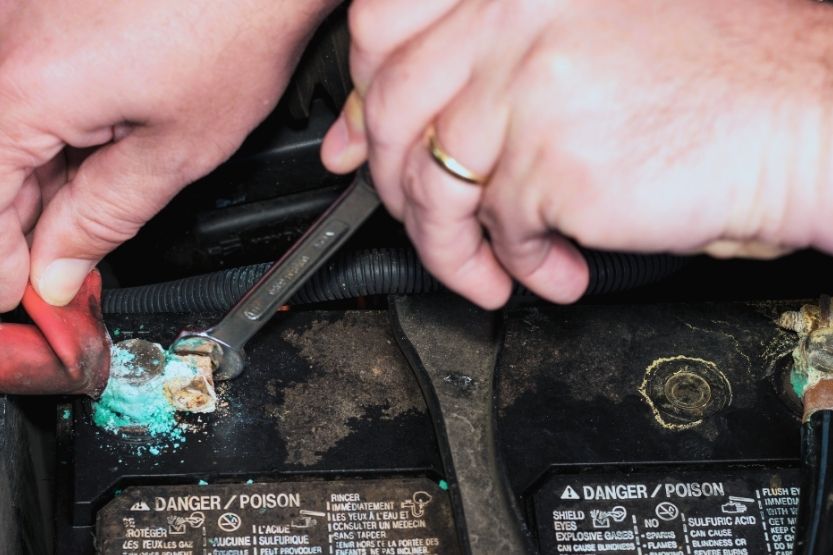
Suppose you don’t want to experience electrical problems while driving your car. In that case, you should pay attention to the battery, the component of your car that supplies its electricity needs.
And the first thing you need to check is its terminals. So, how can you prevent corrosion in battery terminals?
1. Use Petroleum Jelly
Accessible
If you want an inexpensive method of putting corrosion at bay, use petroleum jelly. This product is easily accessible to anyone, and it is beneficial to humans and harmless as well. But it is very potent against corrosive substances.
Remove the Battery Terminals from Their Posts
Again, you need to remove the battery terminals from their posts before doing anything. Once they are free of their posts, rub or apply the jelly on them.
Reconnect to Respective Posts
Now, you can reconnect them to their respective posts. Remember, in reconnecting battery terminals, you should connect the positive (red) before the negative (black).
2. Use Anti-Corrosive Spray
There are different sprays sold in the market that can prevent corrosion in metals. You can find sprays designed explicitly for car maintenance at auto supply stores. Generously spray this substance to the terminals regularly to prevent corrosion from forming on them.
3. Use Grease or Vaseline
If anti-corrosive sprays are too expensive for you, you can use ordinary grease or Vaseline. Coat the terminals and the battery posts with grease or Vaseline, and they will be free of corrosion. You can also use battery terminal grease that you can buy in any auto parts store.
4. Use Copper Compression Terminals
There are special battery clamps made of copper that are not susceptible to corrosion. They are called copper compression terminals. These clamps are made of tinned copper and designed to have complete contact with the battery posts and ensure the free flow of electricity.
5. Properly Charge the Battery
You are now aware that undercharging or overcharging your battery causes its terminals to corrode. So, every time you charge your battery, make sure that you are doing it right.
Don’t Leave the AC and Car Stereo On
Leaving your air conditioning on for extended periods can undercharge your battery. Listening to the car stereo, in the same way, will produce the same result.
Check If the Alternator Produces the Correct Voltage
You should also check if your alternator produces the correct voltage to charge your car adequately. The voltage should range between 13.9 to 14.8 volts. However, if the battery is undercharging or overcharging without your input, you should bring it to a car battery mechanic and have it checked.
6. Regularly Maintain Your Car
Being religious in your preventive car maintenance will go a long way in ensuring that your battery terminals will have no corrosion. Battery checkups should always be a part of your preventative maintenance.
7. Properly Use Your Battery
There is a correct use and incorrect use of car batteries. Underutilizing the battery is not using it properly. Abusing its use is also misusing it.
So, if you are in the habit of making short trips frequently, change this habit. Avoid drawing too much power from the battery by using your stereo and aircon for extended periods.
Frequently Asked Questions
Here are some of the questions car owners often ask about the causes and how to prevent battery terminal corrosion:
Why Do Battery Terminals Corrode?
There are two terminals in a car battery, the positive and the negative terminal. Both can get corroded by improper use of the battery.
If there is positive battery terminal corrosion, it is a sign that you are overcharging your battery. But if corrosion is present on the negative (black) terminal, that means you are undercharging your battery.
If you don’t correct this battery undercharging and overcharging problem, corrosion will always be present in your battery terminals.
How Can I Fix a Corroded Battery Terminal?
A straightforward fix to a corroded battery terminal is to cover it with baking soda. And then pour a little amount of water on it. These two substances will react with the corrosive substance.
They will start to bubble. The mixture neutralizes the acidic substances of the corrosive material and makes them easy to remove.
How Can I Prevent the Battery Terminals from Corroding?
You can prevent corrosion if you apply battery terminal grease on the terminals. You can buy this product at any auto parts store. If you don’t want to spend that much, apply ordinary grease to the terminals and the battery posts before connecting them.
Is There Any Household Product That Can Be Used to Prevent Corrosion of the Battery Terminals?
Yes, there are household products that you can use to fight corrosion on battery terminals. Vinegar and lemon juice are two household products that you can use.
These two are classified as acidic substances. They can neutralize battery corrosion since corrosive substances are base substances.
Conclusion: Corrosion on Battery Terminal
When you notice corrosion in the battery’s positive terminal, it is usually caused by battery overcharging. But when you see corrosion forming on the negative terminal, it is a sign that you have undercharged the battery.
An easy fix to corrosion on battery terminals is to cover each terminal with baking soda. Put baking soda on the other corroded parts of the battery as well. Then pour a small amount of water on the terminals and the corroded parts.
You will see bubbles starting to form where you poured water in. It is a chemical reaction that will neutralize acidic corrosion. This makes the reactants or the reacting substances safe to touch.
Read next:

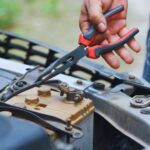
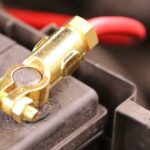
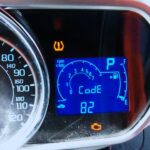
![Check Engine Light On and Off Intermittently [Causes and Fixes] check engine light on and off](https://roadsumo.com/wp-content/uploads/2021/06/check-engine-light-on-and-off-150x150.jpg)
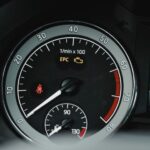

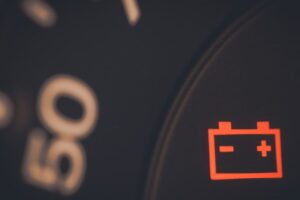

![Read more about the article NAPA Battery Warranty [How Long Is the NAPA Warranty?]](https://roadsumo.com/wp-content/uploads/2021/05/napa-battery-warranty-300x200.jpeg)